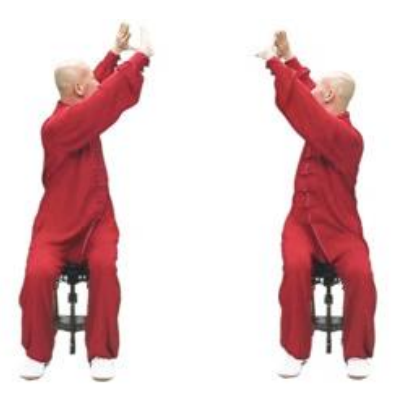
Vision Improvement Qi Gong
(Ming Mu Yi Shi)
This is one of the most recent Qi Gong forms to be developed and has just received it’s validation from the Chinese Health Qi Gong Association. However, it has it’s roots in the Yellow Emperor’s Internal Canon–Eye Meridian Theory (2200 years ago) and the Long Shu Optical Theory – Five Wheels Theory (1100 years ago). We had the privilege of being trained by it’s creator, Professor Xiaojun Wang of Beijing Sport University.
Modern life, and particularly technology, has created many health problems for the human body. Among them are computer vision syndrome and incorrect body posture which causes poor blood supply to the head. In scientific studies Vision Improvement Qi Gong was shown to result in reduced eyestrain and improved distance vision and focal length.
The TCM concept of healthcare and rehabilitation states: “With the form well aligned, the body is relaxed; with the body relaxed, qi is smooth; with qi smooth, blood flows unimpeded; with blood flowing unimpeded, the mind is calm; with the mind calm, the viscera are well nourished and nurtured; with the viscera well nourished and nurtured, body and mind are in good health.”
The body form in Vision Improvement Qi Gong regulates the viscera, meridians, limbs and bones of the whole body, returning them to where they belong. The flow of qi is made smooth and fluent. The movements help to keep the bones straight, the tendons flexible, and qi and blood flowing smoothly. This is of great importance in improving blood supply to the head and the blood circulation in and around the eyes.
There are also eye movements which regulate and increase the elasticity and activeness of the muscles in and around the eyes. This helps to prevent and relieve eye muscle fatigue. It also helps increase blood circulation around the eyes, enhance the function of the lacrimal and eyelid mucus glands, and increase the secretion of tears and mucus. It is effective for lubricating the eyeballs, reducing the friction between eyelid conjunctiva and cornea, preventing lacrimal gland inflammation, relieving symptoms such as dry eyes, sore eyes and blurred vision as well as vision loss
The form also includes techniques which help effectively relax and condition the neck
and shoulder muscles, relieve spasm and loosen fascia adhesion, thus preventing neck and
shoulder fatigue, and improving the blood circulation of the head and face. This helps to alleviate visual fatigue, prevent vision decline and ease neck and shoulder discomfort.
And, finally, there are massage techniques to guide the relaxation of the facial muscles and exercise and condition the head fascia. These techniques stimulate blood circulation of the head, and regulate the Du Meridian, Bladder Meridians and Gallbladder Meridians, contributing to the benefits for the eyes as mentioned above.
